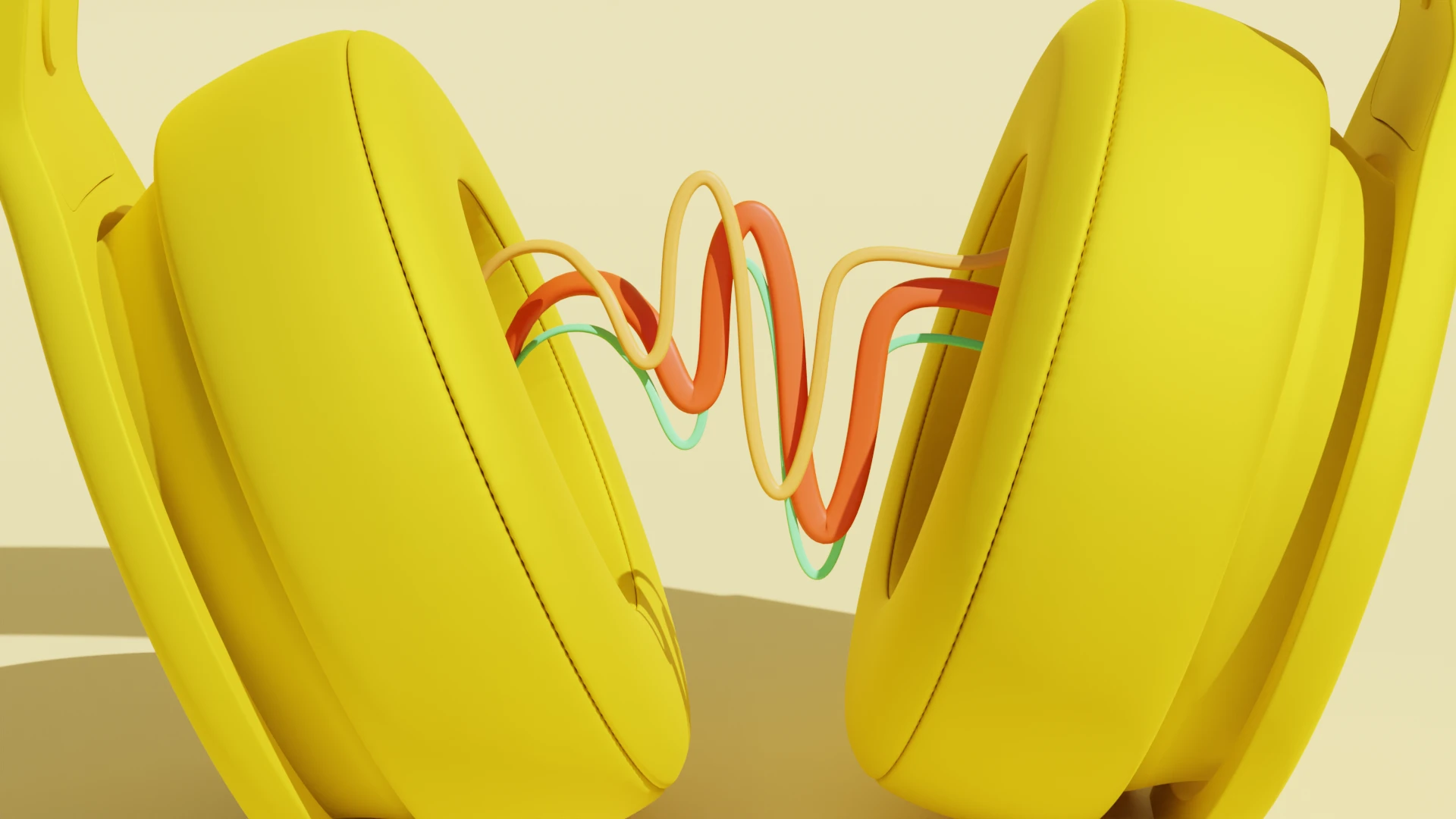Along with being invited to Ira Glass’s apres-ski parties, conducting interviews is one of the great joys of podcasting. It also requires some extra audio recording equipment. If you’re in the same room as your guest, you need multiple microphones for interviews. If you’re recording interviews over the phone or the internet, you need a way to convert your call into high-quality audio tracks. With a little practice and the right recording devices, you’ll find both of these methods easy enough.
Onsite interviews vs. remote interviews
You have two options when it comes to recording interviews: bring your guests into your recording space or record them remotely over a phone or video chat. Each comes with its own pros and cons in terms of convenience, the control you get over sound quality, and the equipment you’ll need. Here are five considerations to keep in mind as you choose between onsite vs. remote interviews:
- Equipment. Recording guests in person requires more equipment than recording them over the phone or over a video chat service like Zoom, Skype, or Google Meet. For a standard two-person interview setup, you’ll need two external microphones with mic stands. You also need a digital recording device to capture sound — either a computer or a digital voice recorder like a Tascam DR-40X or Zoom H6. With professional recorders, you can get away with using the device’s built-in mic, but you’ll get higher quality sound if you plug two microphones into the device’s XLR inputs. If you record over the phone, you need to connect your phone to a digital audio recorder (since many modern phones lack a headphone jack, this may require a Bluetooth connection). When recording a video chat, you can use a program like Descript to send the interview audio directly into your podcast recording session.
- Sound quality. Recording interviews in person, with all participants in the same room, gives you greater control over audio quality. You can choose mics and their placement, do some soundproofing, and minimize ambient noise to produce an interview that sounds balanced. Recording remotely is more of a wild card — you can’t control what’s happening on the other end. A bad phone connection diminishes audio quality, and if your subject is in a noisy environment, background noise can bleed into your recording. You can remove some of these noises during post-production, and if you’re using Descript, the Studio Sound feature will cover a whole lot of audio sins.
- Access to guests. Remote interviewing has transformed podcasting, allowing hosts to connect with anyone as long as they have a stable internet or phone connection. But remote recording can also expose you to all sorts of tech issues, and it may compromise the episode’s overall audio quality. Still, many podcast hosts accept these tradeoffs in the name of access — sometimes guest quality trumps sound quality, and booking remote guests is much easier than asking them to come to a studio. Here again, Studio Sound can be a god-send. Even if your guest ignores your admonitions to call in from somewhere quiet, you can make them sound great with one click and a little tinkering.
- Immediacy. It’s hard to beat the immediacy and intimacy of face-to-face interaction. If your podcast thrives on vibrant back-and-forth exchanges or deep, personal conversations, do your best to set up in-person interviews. There’s nothing like being in the same room for compelling host-guest dynamics. But realistically, you’ll likely be doing a lot of remote interviews, so consider using Riverside, SquadCast, or Zoom, so you and your guest can at least see each other’s body language.
- Video. Tons of podcasts get posted as videos on YouTube, Twitch, Instagram, and other video-sharing sites. With remote interviews, each participant is responsible for their own lighting and video quality, whereas with in-person interviews, the podcast host can pick and choose visual elements. If your podcast audience values video content, do what you can to conduct interviews in person or via video conference (see above).
Essential equipment for onsite interviews
Onsite interviews grant podcasters maximum control over audio quality and, if applicable, video quality. To achieve your desired sound and look, you’ll need to invest in the following pieces of equipment:
- Microphones. Your podcast gear list should start with a reliable microphone for interviews. Look for XLR microphones, which use a balanced connection that cuts down on line noise and electrical interference and can plug into any decent audio mixer or digital audio interface. You can also use USB microphones that plug directly into your computer. However, if you’re conducting an interview and you want reliable audio quality, you’ll want to use at least two microphones. Rather than plugging two or three USB mics into multiple USB ports — which is much more complicated than it sounds — get a digital audio interface that has multiple mic inputs. Plug your XLR mics into that interface, and connect the interface to your computer using a single USB cable. Check out the Shure SM58 (an XLR dynamic mic), the Blue Yeti (a USB condenser mic), and the Audio-Technica AT4040 (an XLR condenser mic). If you have a bit more money to spend, consider the Shure SM7B, which is popular among professional podcasters.
- Mic stands. A sturdy mic stand holds your mic in place so you don’t end up with extraneous noises in your recordings. It also protects your mic from drops and damage. Start with the On-Stage DS7200C (a tabletop mic stand) or the K&M Microphone Stand (with a telescoping boom arm that sits on the floor). If you’re using lavalier microphones, a popular choice for video podcasts, you don’t need a mic stand because they clip directly onto clothing.
- Digital audio interface. A digital audio interface is the hardware that connects your microphones and other audio gear to your computer, converting analog sounds from your inputs into digital audio files. Some are small boxes that sit by your computer; others are larger devices that have built-in mixing boards. Digital audio interfaces have two types of ports. The first type covers analog sources — input sources like XLR microphones and ¼-inch instrument plugs, and output sources like speakers and headphones, which also connect with ¼-inch plugs. The second type of port is a digital port — typically a USB output that connects to your computer. There are tons of digital audio interfaces on the market, and different models offer different input configurations. If you only need two mic inputs, check out the Focusrite Scarlett or the Apogee Duo. If your podcast requires multiple input sources, look into a digital mixer that doubles as an audio interface. The Rode RODECaster Pro is designed with podcasting in mind and may meet your needs if you want to record interviews on a combo mixer and interface.
- Recording device. To capture your recorded audio, you need a machine with a hard drive or SD card. A laptop computer is ideal since it can serve as an all-in-one recording and editing machine. But if you value portability or are hard-pressed for space, consider a digital audio recorder like a Zoom H6, Tascam DR-40X, or Tascam DR-60DMKII, all of which save audio files on an SD card (you’ll eventually transfer these audio files to a computer for further editing). Another advantage of a digital audio recorder (sometimes called a field recorder) is that it doubles as a digital audio interface. If you have one of these, you won’t need a separate device like a Focusrite Scarlett.
- Audio editing software. Professional podcasters edit audio using programs like Pro Tools, Logic Pro, Adobe Audition, and Descript. Of these options, Descript stands out thanks to its specialized tools designed expressly for podcasters. These include Studio Sound (a regenerative speech effect that uses AI to remove noise and echo, then restores and elevates speech), industry-leading transcription capabilities, and an editing feature that lets you cut and paste audio files by cutting and pasting transcript text (in the same way you edit a word document).
- Storage space. As your podcast archive grows, you may find it straining your computer’s storage space. For that reason, it’s often a good idea to store archived audio somewhere else. For many podcasters, this means using both an external hard drive and a cloud locker. Descript’s cloud service is convenient because the software automatically saves your project as you work. When you add a file to a project, Descript creates a copy of the original and backs it up to the cloud, so you never need to worry about misplacing the files you reference in a project. Plus, when you open a project, Descript automatically downloads it to your computer so you can work offline.
Final thoughts on editing an interview
Editing podcasts becomes easier as you build up experience and become more comfortable with your equipment. At first, you may feel overwhelmed setting up microphones, capturing noise-free recordings, and editing multiple audio tracks all at once. But with practice these tasks become second nature, allowing you to devote your energy to what really matters — your content.













































